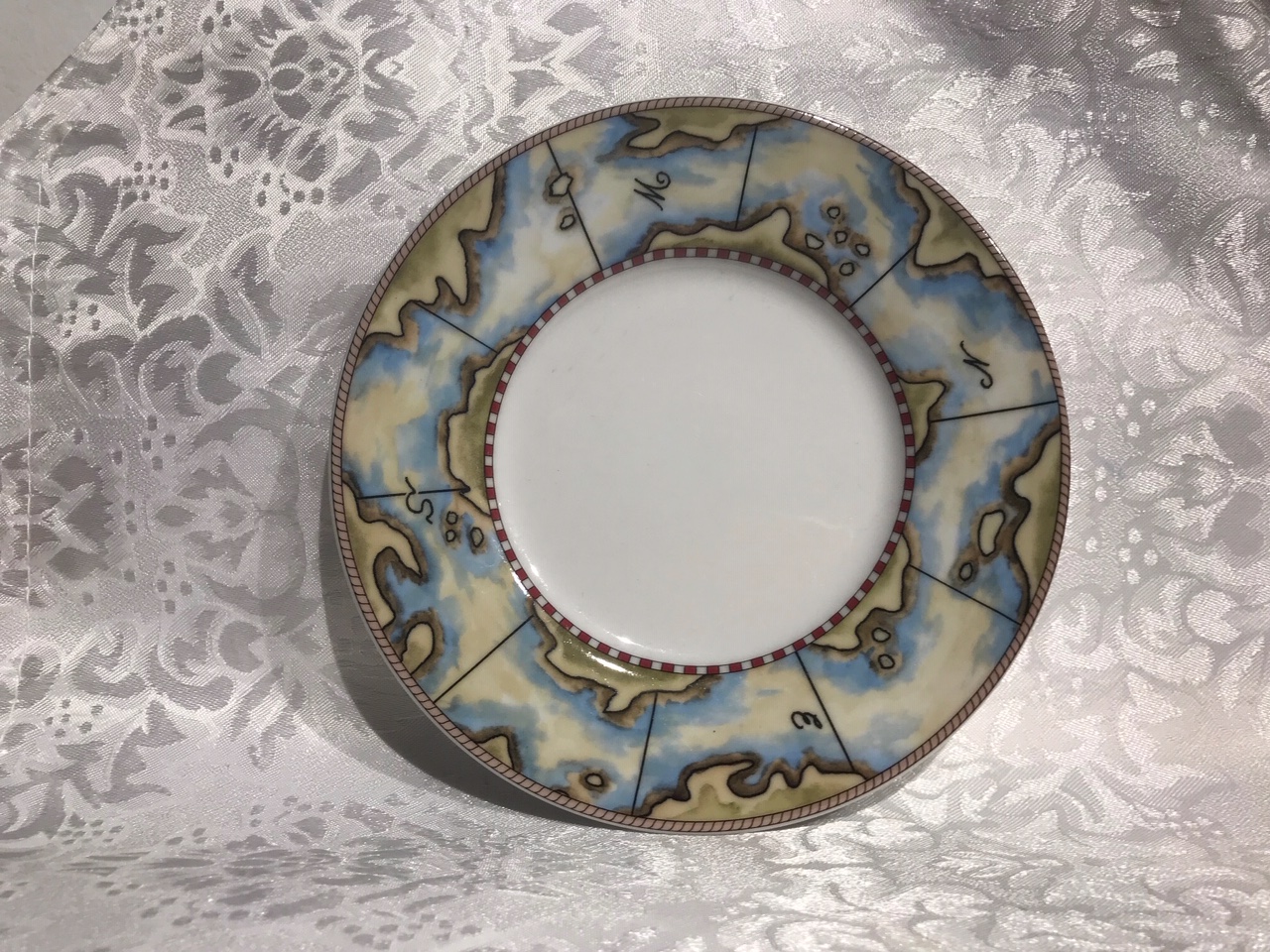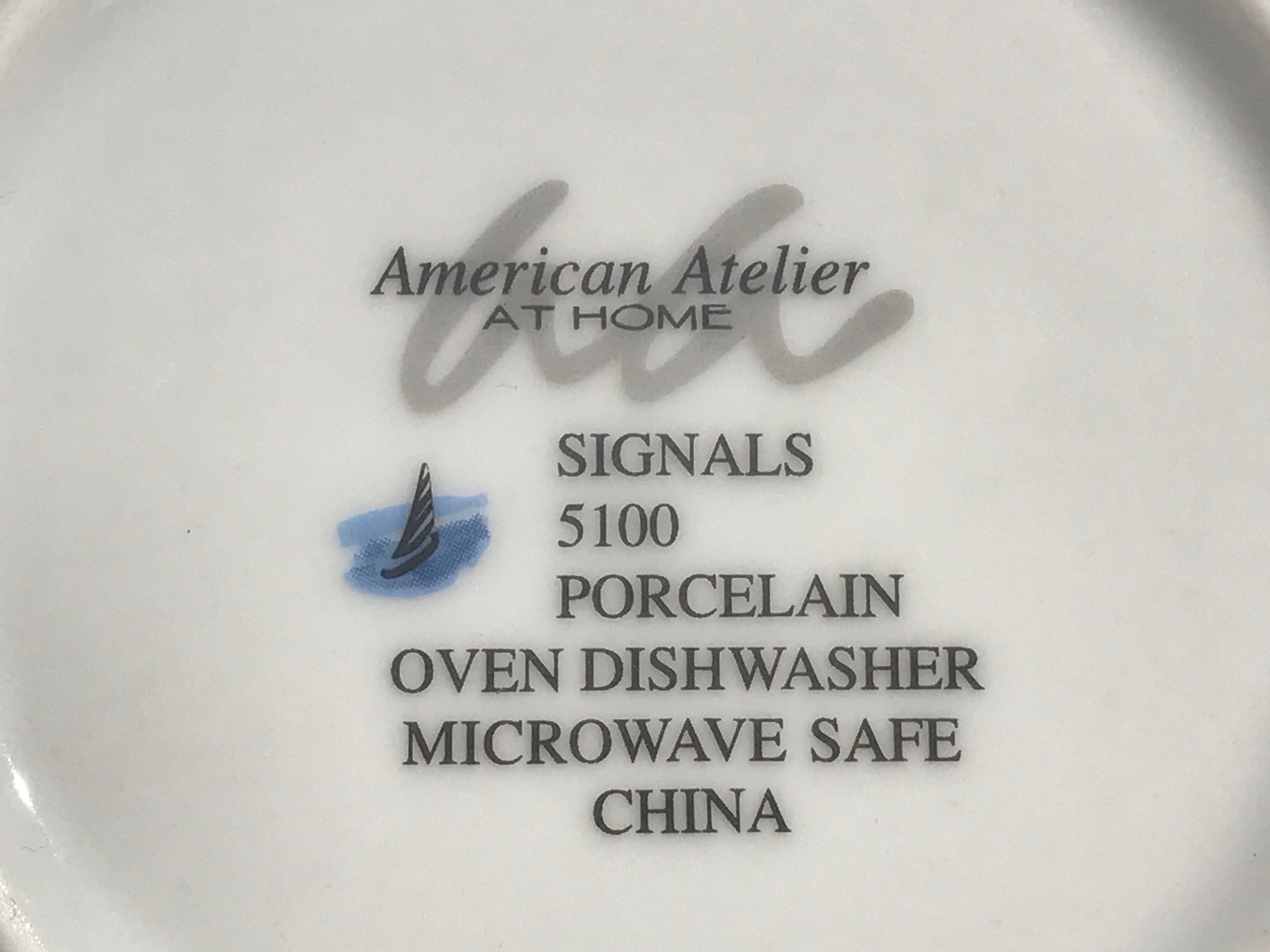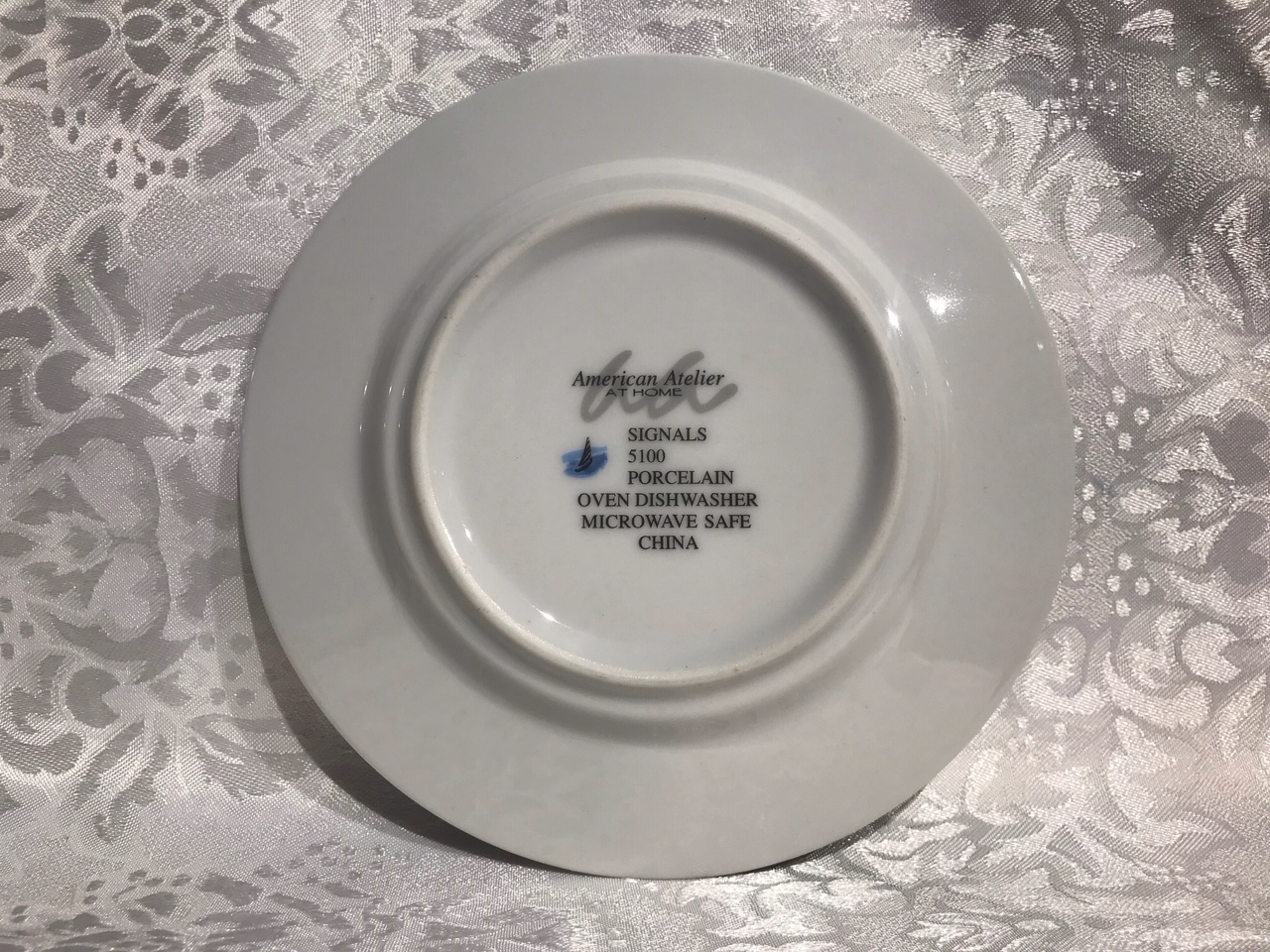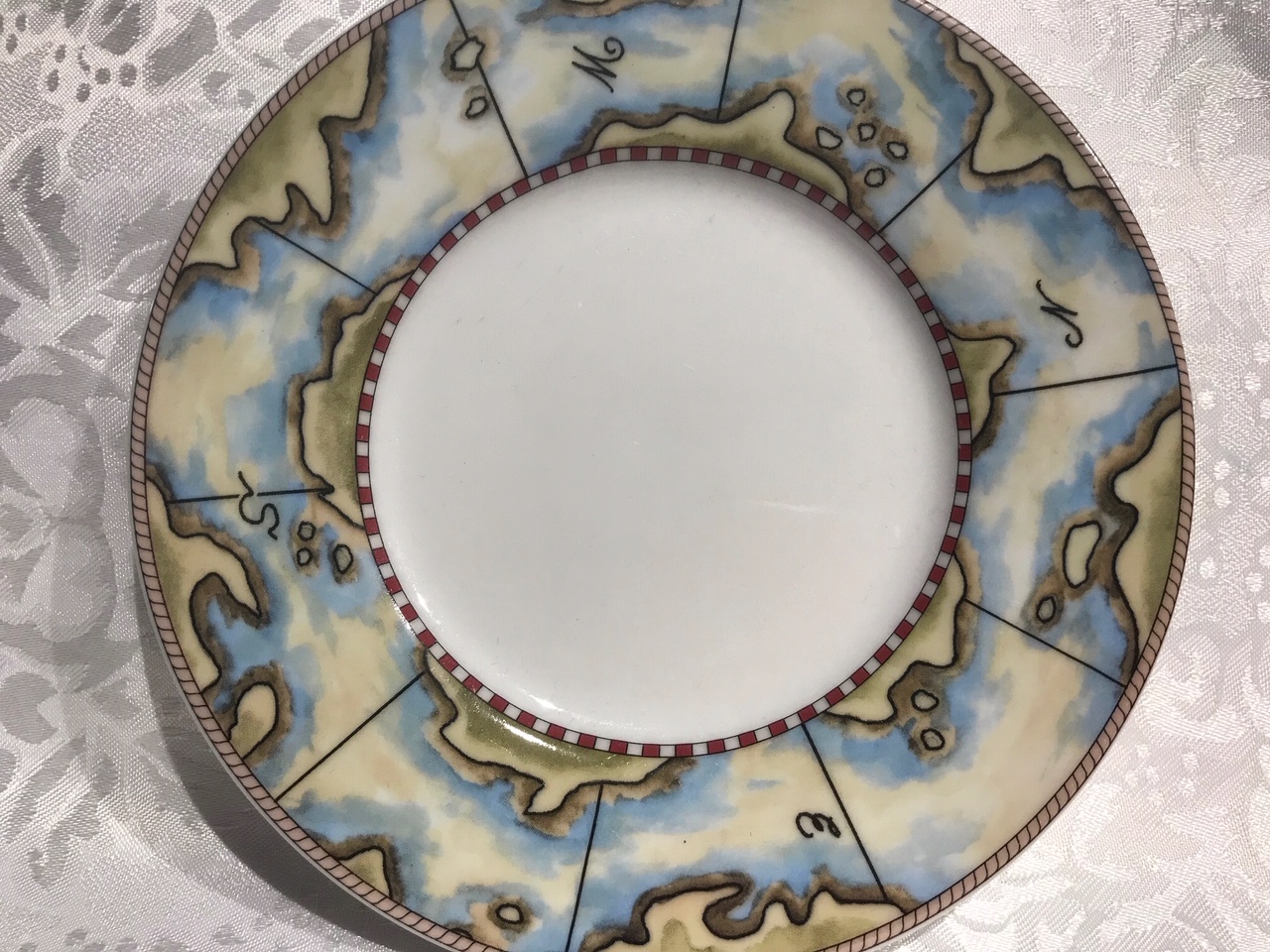American Atelier At Home “Made in China” Signals pattern dish: 15,200 ppm Lead on the food surface. 90 ppm is unsafe for kids.
When tested with an XRF instrument the American Atelier At Home “Signals” pattern dish (5100) pictured here had the following readings:
Food surface of the dish – reading #1, white center:
- Lead (Pb): 47 +/- 13 ppm
- Cadmium (Cd): 17 +/- 7 ppm
- Iron (Fe): 2,029 +/- 207 ppm
- Bismuth (Bi): 110 +/- 15 ppm
- Indium (In): 27 +/- 10 ppm
Food surface of the dish – reading #2, edge decorated with map:
- Lead (Pb): 15,200 +/- 400 ppm
- Cadmium (Cd): 247 +/- 16 ppm
- Chromium (Cr): 271 +/- 125 ppm
- Zinc (Zn): 1,296 +/- 79 ppm
- Iron (Fe): 1,378 +/- 185 ppm
- Vanadium (V): 1,713 +/- 102 ppm
- Titanium (Ti): 1,908 +/- 129 ppm
- Platinum (Pt): 217 +/- 92 ppm
- Cobalt (Co): 577 +/- 105 ppm
Test results reported on this blog are science based, accurate and replicable. Unless otherwise noted, each test result reported here was for testing done for a minimum of 60 seconds with a freshly calibrated XRF instrument (repeated multiple times to confirm the levels of metals found.) Metals not detected by the XRF instrument in “Consumer Goods Mode” are not listed in the test results set above. Said another way – all metals detected by the XRF instrument (testing in Consumer Goods mode) are listed above – for each surface tested.
How is Lead allowed in dishes?
Why is this legal?
While dishes are not currently regulated for total Lead content as detectable with an XRF instrument, a comparable and relevant standard to consider in evaluating Lead-safety in dishes is the United States Consumer Product Safety Commission standards for toys and other items used by children (standards implemented with the Consumer Product Safety Improvement Act of 2008.) As a result of this relatively new set of regulatory standards, items are considered safe for use by children as long as they fall below 90 ppm Lead in the paint, glaze or coating (and below 100 ppm Lead in the substrate.) Dishware is exempt form this regulatory standard unless it is a set of dishes expressly made and marketed to be used by children (like a set of baby dishes.) The government / industry “thinking” here (read: “exploited regulatory loophole”) is that “dishes are not intended for use by children.”
Total Lead content standards (as detectable using XRF technology) are separate and distinct from leach testing standards. Leach testing standards are the only current standards for dishware made to be used by adults. Current/modern Leach testing standards are outdated and not protective of human health. You can read more about the limitations of leach testing standards (and why they put human health at risk when dishes are used as intended) here on this related post.
So how does this dish rate, overall?
Would you use it in your home Tamara?
I would never use a dish like this given the very high level of Lead in the food surface of the dish. I cannot tell you how many times readers have said to me “…but I make sure my food doesn’t touch the decorative edge…” – a statement which I find ridiculous as it would be impossible to do (or if you achieved that goal – of the food not touching the edge – it would take a considerable amount of effort each time you ate – and would still not likely be a successful initiative!) I personally prefer to err on the side of caution and use completely Lead-free dishes in my home. Here’s my Amazon affiliate link* to the exact dishes I use every day in my home (a style and brand of dishes I have tested repeatedly over the years and found to be Lead-free – in the plain white options only): https://amzn.to/2NwxTJ1 [If you are interested in purchasing the dishes I use in my home, check the prices at Target before purchasing them on Amazon – as Target may have a better price.] Here’s a link to a post with some simpler (not as decorated and therefore less expensive) versions of the dishes I use in my home as well.
As always, thank you for reading and sharing my posts.
Please let me know if you have any questions.
The testing I report on here on my blog is a collaborative effort with the support of my readers. If you are interested in participating in this testing, please click here for more information about how that works.
Tamara Rubin
#LeadSafeMama
*Amazon links are affiliate links. If you purchase something after clicking on one of my links I may receive a small percentage of what you spend (usually 4 to 6%) at no extra cost to you. 

Never Miss an Important Article Again!
Join our Email List







I have a set of tea cups from your company. My daughter heated some milk and tea in your cup fro 10 seconds.
When she went to remove the cup it was so hot she received 2nd degree burns on the finger that grabbed the handle.
This is a problem as you state your product is mircrowave safe on the bottom of the tea cup.